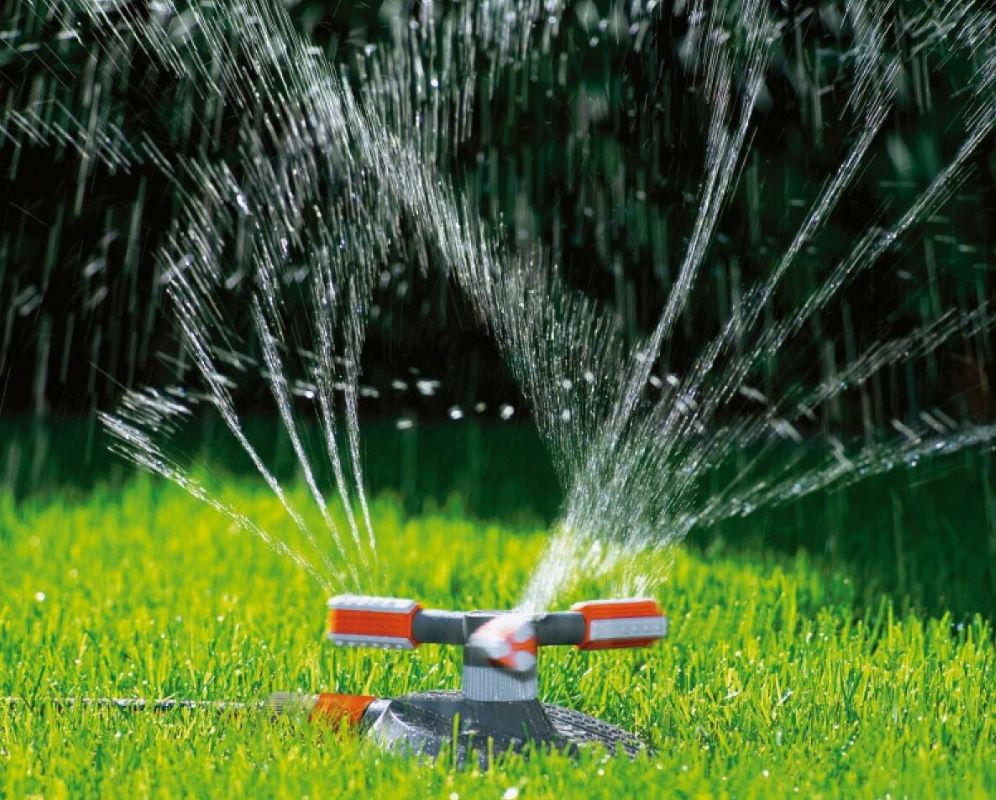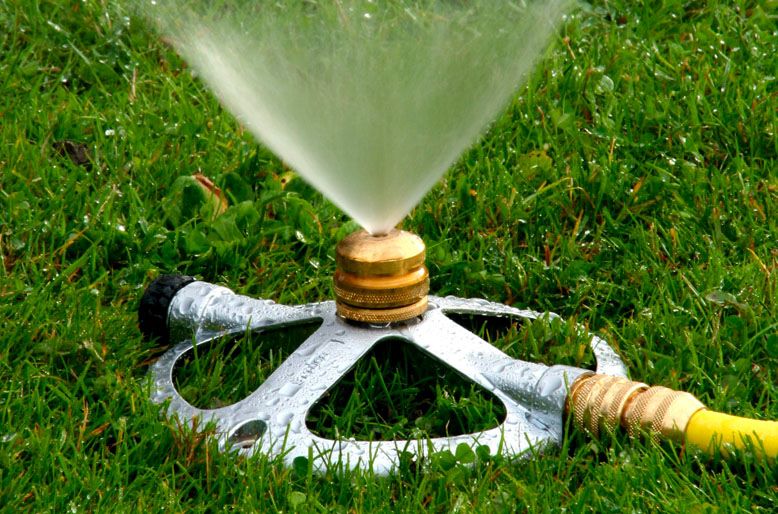
Not only will you no longer have to worry about this problem and will be able to devote this time to other activities, but the watering system ensures continuity and regularity in the maintenance of your plants and your lawn. In addition, the different systems are designed to deliver the right quantity of water at the right time. There are four systems, all of which have their advantages and disadvantages depending on the type of surface to be treated.. Our gardening experts give you all their tips for choosing the right automatic watering system for your garden.
Discover how the 4 most common automatic watering systems work and the advantages.
How does automatic watering work?
Automatic watering is a system that automates the watering of the lawn and various plants. These systems are composed of surface or buried pipesoutlets with a pressure system to spray the surface at the desired time. You can set watering at a fixed time and choose the watering frequency according to the type of crop and the climate in your area.
Some plants require less water, others need abundant watering. Furthermore, some automatic watering systems allow remote control. Thanks to this system, you will be able to provide your plants with enough water to promote their development, even in your absence.
What are the advantages of automatic watering?
Automatic watering has many advantages. First, it allows A great time saver for users by saving them an additional task. You will be even happier to have such a system when you are away for a few days or weeks. Automatic watering is also the best solution for feed your lawn and plants with the right amount of water. Watering too abundantly could drown them, while watering too sparingly carries a risk of dehydration.
Watering systems are designed not to damage the soil and plants by dispersing water over the surface. You adapt the frequency and volume of water according to the type of planting, its exposure or even the nature of the soil. This way, you save water and help preserve the planet.
Automatic surface or buried watering?
Surface system
Automatic surface watering is composed of a network of pipes laid on the ground. They spray the ground at low pressure to allow good irrigation. Economical and easy to install, they are compatible with small surfaces. They can also be moved. On the other hand, on larger grounds, this may not be sufficient. You also have to increase the number of fittings and pipes, which can become bulky and unsightly.
Buried system
Underground automatic watering has multiple advantages. The network of underground pipes is connected to turbines and nozzles which spray the lawn and plants. Most of the time, the system can be hidden in the ground after use. Buried systems are best for large areas and allow you to maintain an elegant lawn, without annoying or unsightly elements on the surface.
The 4 types of automatic watering
Rotating jet watering


Rotary irrigation is a surface system inexpensive and easy to install. It allows a good water dispersion regardless of the size of the land. In fact, it can cover up to 150 m of surface. To install it, you simply need to connect it to the water supply and the timer.
Drip or spot watering


This is another surface watering system. It is widely used for hedges, and shrub or flower beds, as well as the vegetable garden. It is popular thanks to its low flow which allows significant water savings, while perfectly and continuously irrigating the plant plants.
What’s morelocalized watering promotes the development of the plant while reducing your water consumption. Drip or localized watering is not relevant for feeding old trees with developed roots. Furthermore, it requires a fairly large pipe network, which is not suitable for all surfaces.
Surface watering – sprinkler


If you have some fragile plants and plants, the sprinkler, or micro-sprinkler, is the ideal solution. This low pressure surface system disperses fine droplets which will not damage your plants and vegetables. Discreet and requiring few pipes on the surface, it is very popular for supplying flower beds where the use of a drip would be difficult to install and too visible. You will also be able to cover more surface area, but this system wets the foliage, which in certain plants encourages the appearance of fungi.
Underground watering


This type of watering is very popular for lawns. This is a retractable system which allows the nozzles and turbines to disappear into the ground once watering is finished. You can choose them according to the surface to be covered. This system is both more aesthetic and very effective for watering the lawn. However, installation is a long and delicate operation which requires the digging of small trenches, or the cutting of flower beds placed on plastic bags until the system is installed. The holes will then have to be filled. To obtain a beautiful, uniform lawn after installing an in-ground watering system, you will have to wait about two months. Before that, the system and the holes will still be visible.
Automatic watering: prices and advice
The prices of automatic watering systems vary greatly depending on the system chosen, the surface area to be covered and the complexity of the terrain. Covering a plot of land of 300 m² but with differences in level or unevenness is more complex than covering an immense flat and rectangular plot of land.
Buying a drip costs between 80 eurosif it is connected to the tap, and 100 to 120 euros for a professional connection.
THE programmers prices for buried systems may vary of 50 to more than 2000 euros.
Before choosing your automatic watering system, compare the systems and prices that we offer you.
To ensure the quality of the system and installation, carry out a test. Place a bowl anywhere in the garden for a given time. Repeat the operation in different places and over the same period of time, and see if it is still as full. If so, then your watering system is working perfectly. Obviously, the more sprinklers there are, the more evenly your garden is watered.

